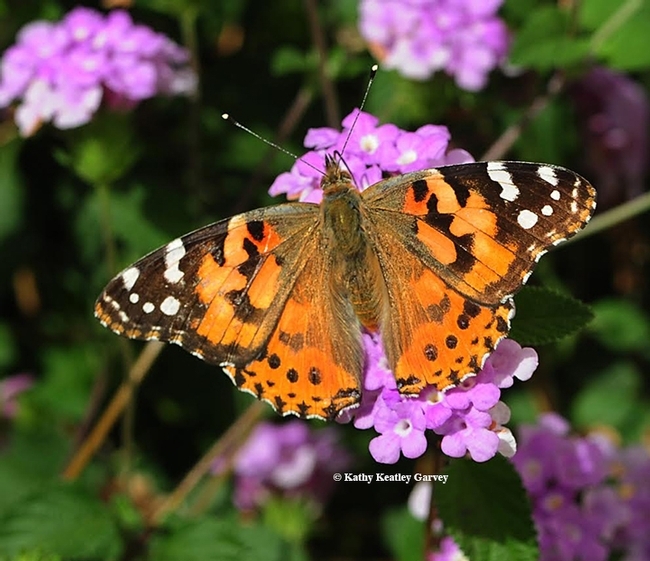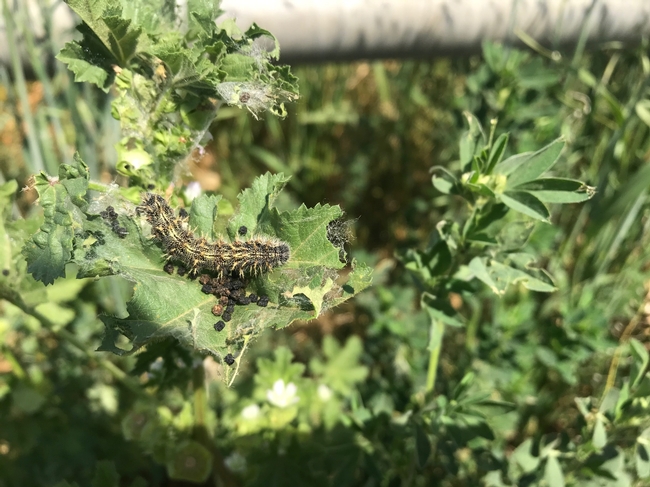Painted lady butterflies (Vanessa cardui) are dazzling us with color, but surprising us with sporadic finds of caterpillars on crops this year, including alfalfa, pistachio, walnuts, artichokes, and hybrid sunflower (see IPM Advisor Emily Symmes blog: What's that Caterpillar on my Weeds?).

Painted lady caterpillars primarily feed on weedy hosts such as Malva (cheeseweed), plantago, cocklebur, star thistle, and some legumes, especially lupines, but NOT alfalfa or close relatives. They do not breed on alfalfa or tree crops, so while one may find larvae in these crops, they should not cause any economic damage. In an alfalfa field in Yolo County, caterpillars were found feeding on Malva, and spilling over into nearby alfalfa plants where they were forming silken tents with leaves, to hide and pupate before emerging as adults. They are not known to feed on Solanaceae (tomatoes and relatives).
Sunflowers are a different story, as painted ladies feed on and breed in this crop. Watch for eggs and larvae in seedling fields where painted ladies can cause significant plant damage and stand losses. There have been reports of serious outbreaks of painted lady larvae on hybrid sunflower seed fields in Imperial County. In the Sacramento Valley, eggs are being found on sunflower, with some fields requiring insecticide sprays to control the larvae.
Identification: Painted lady larvae are variably colored as larvae, and while typically darker in color, range from almost black or purplish to nearly cream-colored or white (see here for color variation). They have many hairy, branched spines. Larvae develop rapidly and tend to use silk to pull leaves together form a loose shelter in which they can hide. These shelters will typically also have frass (insect excrement) associated with them. Eggs are laid singly on leaves and are cream to green and lined with vertical ridges

This was a big year for painted ladies, with swarms of delightful orange-colored butterflies flying through our area in March. Painted ladies are known to travel annually from the deserts of Southern California and Mexico, where they overwinter, to the Pacific Northwest. All the rain and favorable weather this past winter allowed wildflowers and other plants to thrive, giving the painted lady caterpillars plenty of food to bolster their populations and lead to a substantial migration.
The last big year for painted ladies in our area was 2005. Beginning in August, the migration movement reverses and butterflies head south toward their desert wintering grounds. While the northward migration is fast, with adults traveling hundreds of miles in a few days, the southward migration is a much slower, with adults feeding on nectar in flowers and breeding on route back to overwintering grounds.
Aptly named, the painted lady is a splash of color with their bright orange wings with black and white dots. They're about half the size of their monarch cousin butterflies. Enjoy their colorful display as they fly by and perhaps nectar on flowers in your garden or roadside weeds. But, watch for eggs and larvae in sunflower fields, a favored host plant.

